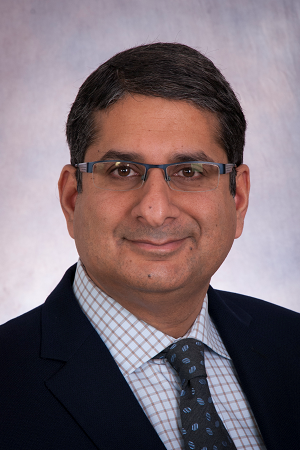Clinical trial for teens shows improved health outcomes for type 1 diabetes
Summary:
A new study in teenagers with type one diabetes shows promise in reducing chronic kidney disease and informing future precision care.
A clinical trial involving adolescents with type 1 diabetes (T1D) has found a combination therapy may reduce chronic kidney disease and improve health outcomes. The findings could help guide more precision care for young people with T1D.

Led by Dr. Farid Mahmud, Associate Scientist in the Translational Medicine program and Staff Physician in the Division of Endocrinology at The Hospital for Sick Children (SickKids), and published in Nature Medicine, the study evaluated a therapy that combines standard insulin treatment with the investigational drug dapagliflozin. Results of this combination therapy showed improved blood sugar control and kidney function, and reduced weight gain in adolescents with T1D.
T1D is a chronic autoimmune condition that causes the pancreas to stop producing insulin, a hormone that controls blood sugar levels. While most people with T1D are diagnosed as adults, the condition often starts in childhood and early adolescence.
T1D requires insulin therapy throughout a person’s life, which can lead to side effects such as weight gain and chronic kidney disease. In the trial, participants who received dapagliflozin alongside insulin had fewer of these side effects and better overall health outcomes.
"Our findings showed that adolescents who received this combination therapy were able to improve many symptoms typically associated with insulin-managed type one diabetes,” says Mahmud. “This could inform a new early intervention strategy for the growing population of teenagers with type one diabetes.”
Patient partner key to trial success

While previous research has shown similar results in adults, Mahmud’s team focused on designing a clinical trial specifically for teenagers, a group often underrepresented in clinical trials. Hormonal changes, psychological development, and the shared responsibility between teens and their parents for managing treatment protocols can make trial participation more complex for this age group.
To address these challenges, the research team worked closely with patient partner Lynne McArthur. Together, they enrolled 98 participants between 12 and 18 years old in the study, known as the ATTEMPT study, across three sites.
McArthur’s involvement in research began when one of her twin sons was diagnosed with T1D following a trip to the SickKids emergency department at just 18 months old. A few years later, his twin was also diagnosed. That experience led McArthur to become more involved in research efforts to improve diagnosis and treatment options for families like hers.
"Deciding to participate in a clinical trial is an important decision, but my goal has always been disease prevention. I knew that our participation could help build a future where children don’t get T1D."
Lynne McArthur
Now that her sons are older, McArthur continues to be involved as a patient advisor. She reviews recruitment materials and provides feedback on trial design, helping ensure the research stays connected to the lived experience of people managing T1D.
“Participating in research, whether in a trial or as an advisor, is hugely rewarding. With my experience as trial participant, I can see how the plans on paper would impact the real lives of people living with diabetes,” explains McArthur.
Moving toward tailored treatments for T1D
The trial provides a valuable foundation for future research into precision medicine for children and adolescents with T1D. One of those opportunities is the Empowering diVERse Youth with diabetes thrOugh precisioN mEdicine, or ‘EVERYONE’, study, which builds on this approach by focusing on how individual factors influence treatment response.
Aligned with Precision Child Health, a movement to individualize care for patients and families at SickKids, the EVERYONE study will explore how a youth’s unique characteristics such as their insulin sensitivity, immune response, metabolism, genetics and social health impact how they respond to insulin treatment. By understanding these differences between patients, the team hopes to one day inform tailored treatments to optimize outcomes for youth with T1D.
“This is opening exciting new treatment opportunities for youth with type one diabetes,” says Mahmud, who is also an Associate Professor in the Department of Paediatrics and Institute of Medical Science at the University of Toronto. “We’re giving them options that are grounded in science and designed to help them thrive throughout their lives.”
This study was funded by Breakthrough T1D (formerly known as Juvenile Diabetes Research Foundation, JDRF) and Canadian Institutes of Health Research (CIHR) Strategies for Patient Oriented Research (SPOR).

